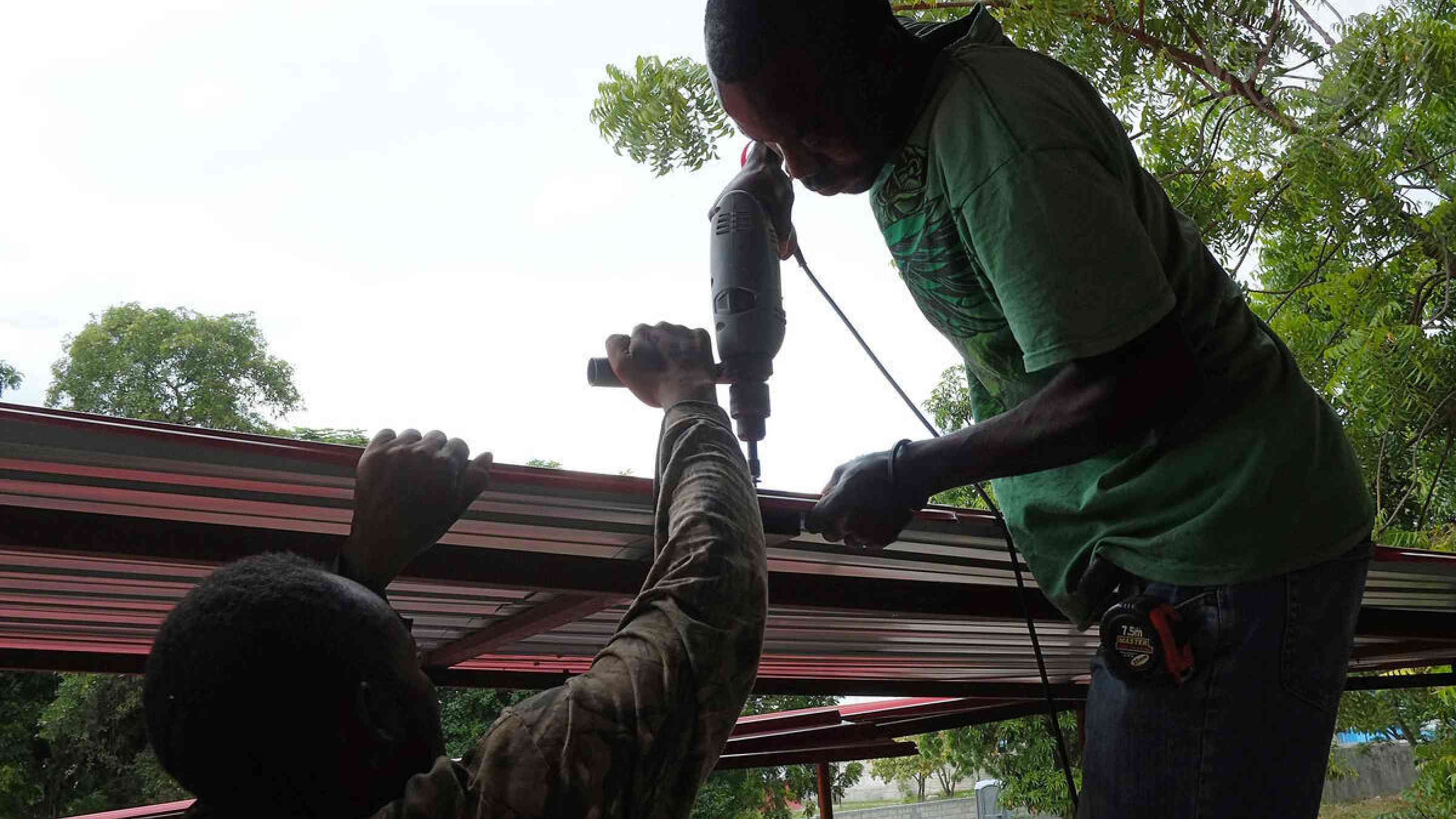Embedding Risk in Investment Decisions
Investing in disaster risk reduction has become essential for developing sustainability in a rapidly changing climate, especially for Small Island Developing States (SIDS) and Least Developed Countries (LDCs). Research shows that global investments of €1.6 trillion in appropriate disaster risk reduction strategies could avoid losses of €6.4 trillion. Despite its importance, disaster risk continues to be mispriced and underestimated in the public and private sector.
This session will focus on understanding successful approaches and tipping points that can lead to integrating disaster and climate risk reduction measures into public and private investment decisions. It will also identify key obstacles and barriers to these integrations and how they can be overcome while stimulating a sense of urgency among stakeholders to support efforts to embed disaster risk reduction measures in financial decisions.
Session objectives
This session will focus on :
- Identifying opportunities for, and barriers to, reducing disaster and climate risks through public and private investments;
- Unpacking successful efforts to embed risk in investments and in investment decision-making processes;
- Identifying means to catalyze action to better align public and private investment strategies, operations, and activities with the Sendai Framework.
Moderator
- Niels Holm-Nielsen - Program Manager, GFDRR, The World Bank
Speakers
- Elena Panova - Resident Coordinator of Egypt, United Nations Resident Coordinator Office
- Titta Maja - Director General, Department for Development Policy, Finland
- Shiva Makotoko - Executive Director & Deputy CEO, RBN Fund Managers
- Nadine Brown - Director, Sustainable Development, Planning Institute of Jamaica
- Carlos Picado Rojas - Director, Strategic Development Unit of the National Risk Management System, Costa Rica
Experience this event
Watch the session
Documents
Learn more
Read more on risk-informed investments and why they are important to reduce disaster risk.
Where do we stand?
Investing in disaster risk reduction (DRR) is a precondition for developing sustainably in a rapidly changing climate. DRR investments can be achieved and make good financial sense. Yet, they are not carried out to the extent required. Public and private investment decisions typically:
- Don’t consider how an investment may be creating disaster risk in terms of exposure and vulnerability at multiple levels, including national, local, and landscape.
- Don’t include costs of disasters and benefits of risk mitigation in financial modeling and on balance sheets. Thus, such costs and benefits remain either external to, or are undisclosed in, private and financial sector investment decision-making.
- Treat disaster and climate risks as temporally remote, limited, uncertain, and/or unquantifiable at the level of an individual project and, thus, externalize them.
Though action is lagging, the combined effect of COVID-19 and increasing disaster risk from the climate emergency, provide todays leaders, investors, and decision makers with a unique opportunity to invest in public and private funds in a resilient way for a green, sustainable future.
To this end, governments should endeavor to make all financial investments resilient to disasters and to ensure that they do not create new risks. At the same time, the private and financial sector also need to lead and foster risk-informed business behaviors that include reporting and disclosure of material, long-term sustainability risks, as well as impact reporting on how companies are contributing to resilience aligned with the Sendai Framework, Paris Climate Agreement and Sustainable Development Goals.
Session guiding questions
- How can disaster and climate risk reduction measures be better embedded into public and private investments?
- What are key obstacles/barriers to reducing disaster risk in public and private investments and how can they be overcome?
- What are examples of policies, programs, measures that resulted in investments that have successfully integrated risk reduction measures?
- What was your/your institutions’ decision-making process that led to a risk-informed investment? Provide examples of the competencies, capacities and tipping-points that catalyzed and led to action.
- How can different stakeholders (regulators, private investors, policy makers, civil society, academia, intergovernmental organizations, etc.) catalyze action to better align public and private investment strategies, operations and activities with the Sendai Framework?
- What are the unique challenges of LDCs and SIDS in embedding disaster and climate risk in public and private investments and how can these be addressed?

Agenda
Location
BNDCC 1-1st Floor
Online access
Participation
Open to those registered for the conferenceInterpretation
AR, EN, FR, RU, ES, ZHDetails
Contact
Jenty Kirsch-Wood, jenty.kirsch-wood@un.org Abhilash Panda, pandaa@un.org Sarah Houghton, houghton@un.org